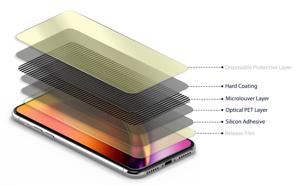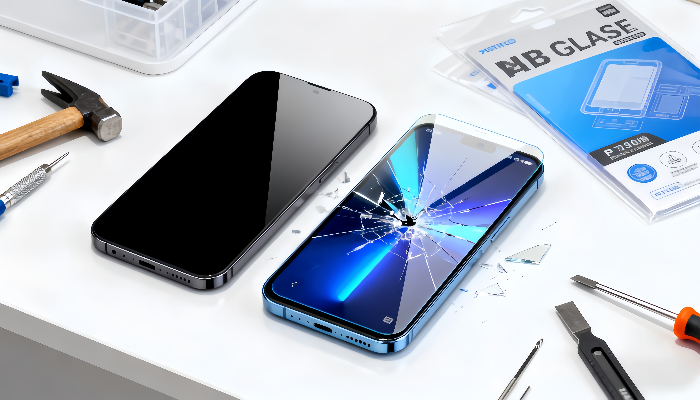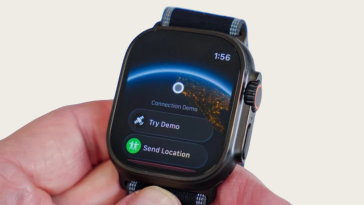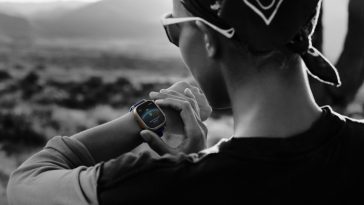
As smartphones become ever more integrated into daily life, their screens face constant threats—scratches, prying eyes, and even eye strain. Functional screen protectors are designed not only to physically shield your device but also to deliver advanced benefits through specialized technology. This guide takes a detailed look at the major types: privacy (anti-spy) protectors, blue light filtering films, and anti-fingerprint coatings, focusing on their working principles and practical applications, all supported by authoritative sources.
1. Privacy Screen Protectors
How They Work: The Micro-Louver Principle
Privacy screen protectors employ micro-louver technology—a sophisticated optical design similar to ultra-tiny window blinds embedded within the screen film. These micro-louvers are microscopic vertical slats arranged in such a way that light from the display passes straight through only when viewed from the front. At off-angles, the louvers block or scatter the light, making the on-screen content appear dark or completely obscured.
Key Details:
- The louvers typically limit the viewing angle to about 30–60°.
- Only viewers looking straight-on can clearly see the content.
- From the sides, information is darkened, protecting privacy.
- High-quality protectors may include additional anti-glare and blue light reduction layers.
Best Use Scenarios
- Public transport, airports, cafés: Prevent others from casually viewing sensitive information.
- Business settings: Safeguard confidential data in open offices and meeting rooms.
- General public spaces: Maintain privacy for personal messages or financial info.
| Feature | Principle | Best for |
|---|---|---|
| Privacy filter | Micro-louver (blinds) | Public places, professionals |
2. Blue Light Filter Screen Protectors
How They Work: Selective Light Blocking
Blue light filter protectors use a special optical coating or embedded layer designed to block or absorb high-energy blue light waves (typically 380–500nm), which are emitted from phone or tablet screens. Scientific research has shown that blue light can suppress melatonin production, leading to disturbed sleep cycles and increased eye strain, especially during nighttime use123.
Key Details:
- The filtering material reduces the intensity of blue light reaching your eyes while allowing other wavelengths to pass, thus maintaining screen clarity.
- Some films use a visible yellowish tint to achieve this; others incorporate advanced materials to minimize color distortion.
- May be combined with anti-glare layers for improved usability outdoors.
Best Use Scenarios
- Heavy device users: Office workers, students, and gamers spending 4+ hours daily on screens.
- Night owls: Anyone who uses their phone in the evening or night.
- Individuals prone to eye fatigue or sleep disruption.
| Feature | Principle | Best for |
|---|---|---|
| Blue light reduction | Coating filters 380–500nm | Longtime users, sensitive eyes, insomnia |
3. Anti-Fingerprint Screen Protectors
How They Work: Oleophobic and Hydrophobic Coatings
Anti-fingerprint films rely on a special oleophobic (oil-repelling) coating layered atop the screen protector. This molecular nanocoating resists oils and moisture—commonly from your skin—preventing them from sticking or building up. The result is fewer smudges, less glare from grease, and easier cleaning. Some advanced versions combine both hydrophobic (water-repellent) and oleophobic properties for dual protection45.
Key Details:
- The coating forms a slick surface, making it difficult for fingerprints and other marks to adhere.
- Even if marks do appear, they are much easier to wipe away.
- Often combined with scratch resistance.
Best Use Scenarios
- Frequent touch users: Typing, gaming, swiping, and all-day use.
- People seeking a consistently clear, clean display.
| Feature | Principle | Best for |
|---|---|---|
| Anti-fingerprint | Oleophobic/hydrophobic coating | Heavy users, clean-screen fans |
Choosing the Right Functional Screen Protector
Selecting the most suitable screen protector depends on your lifestyle and priorities:
- Need privacy?Go for micro-louver privacy films if you use your device in public spaces.
- Struggling with eye fatigue or sleep quality? Opt for blue light filtering films, especially if you use your phone at night or for extended periods.
- Hate smudges and fingerprints? Choose an anti-fingerprint protector to keep your display looking fresh.
- Multifunctional needs? Hybrid protectors combine privacy, blue light filtering, and anti-fingerprint features.
Modern screen protectors offer much more than just scratch protection—they are tailored tools to improve your smartphone experience in visible and invisible ways.
- https://www.androidcentral.com/how-do-blue-light-filtering-screen-protectors-work-and-should-you-buy-one
- https://www.lenovo.com/us/en/glossary/blue-light-filter/
- https://eyejust.com/blogs/news/do-blue-light-screen-protectors-work
- https://patents.google.com/patent/TW201520052A/en
- https://www.zupyak.com/p/3928252/t/the-invisible-shield-unraveling-the-importance-of-screen-protectors





 No products in the cart.
No products in the cart.